- Home
- Military & Defense
- The B-1B Lancer could be used to strike North Korean missile sites - here's what the bomber can do
The B-1B Lancer could be used to strike North Korean missile sites - here's what the bomber can do
The Pentagon has other plans too, but such a US strike is "the best of a lot of bad options," one senior intelligence official told NBC News.

A preemptive strike on the North's missile sites, however, could escalate the situation, prompting Kim Jong Un to strike South Korea or Guam.
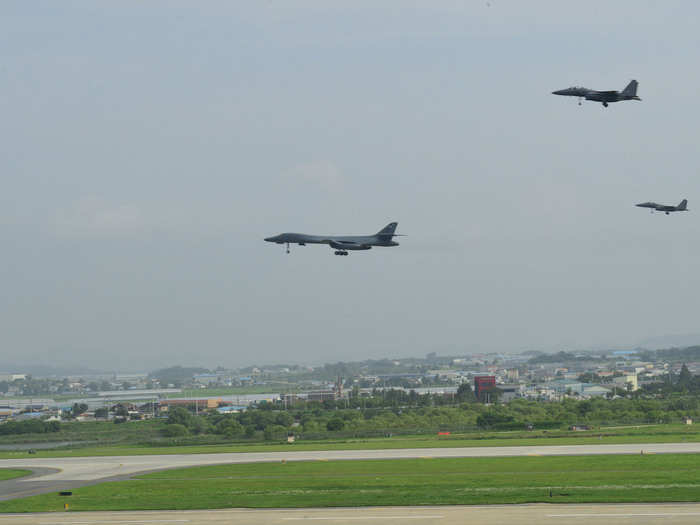
One senior military officer told NBC News that this risk of escalation is one reason why the Lancer would be used: It cannot carry nuclear warheads and that might temper Kim's response.
But other officers, such as retired Adm. James Stavridis, are not convinced by the argument.
Source: NBC News
The Lancers may strike the North's missile sites with their extended range Joint Air-to-Surface Standoff Missiles, which have a range of 500 miles and allow the bombers to hit their targets from well outside of the North's borders.
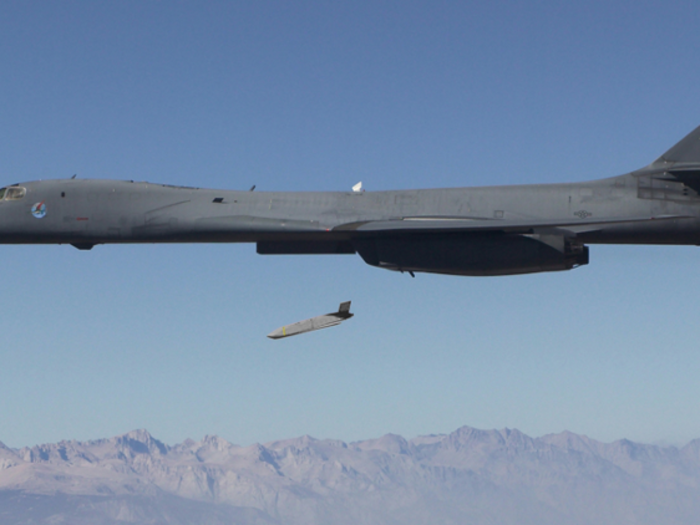
Source: NBC News, The National Interest
The Lancers would be escorted by an unknown number of fighter jets as well.
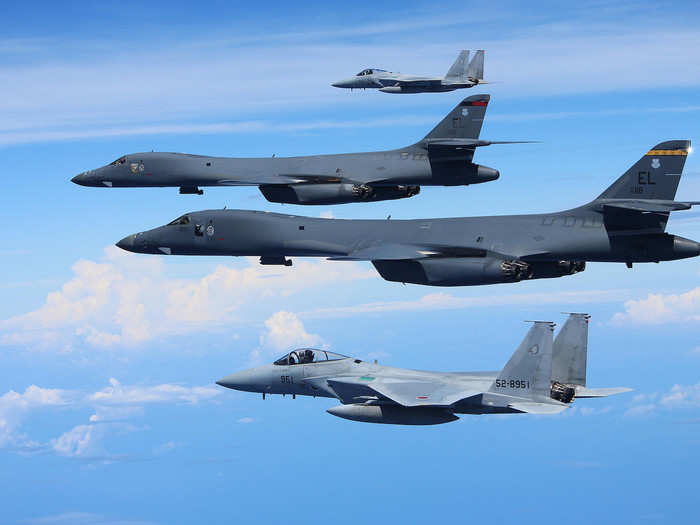
Logan also could not comment on which fighters would escort the bombers, but F-15s from the US, South Korea, and Japan seem to have accompanied the Lancers in most of the recent practice bombing runs.
F-16s and Japanese F-2s have also taken part in some of the exercises.
The 2,100-mile flight from Guam to North Korea would take about 10 hours, and therefore the bombers would need to be refueled from KC-135s, as seen below.
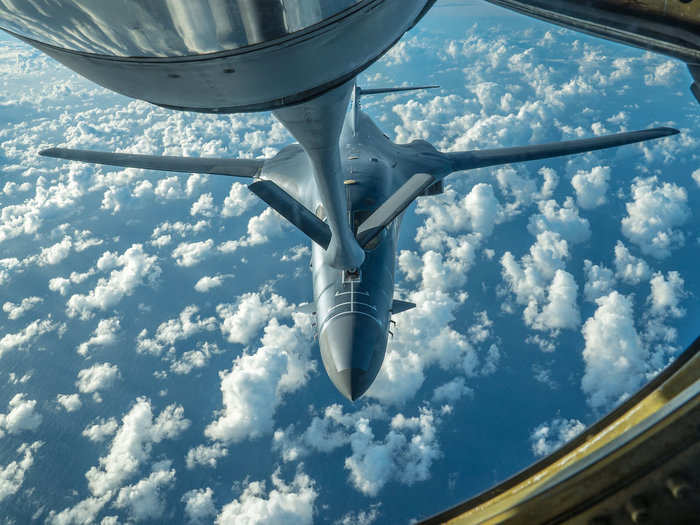
Source: NBC News
If Trump decided to strike North Korea's approximately two dozen missile sites, an unknown number of the six Lancers currently stationed in Andersen Air Force Base in Guam would be deployed.
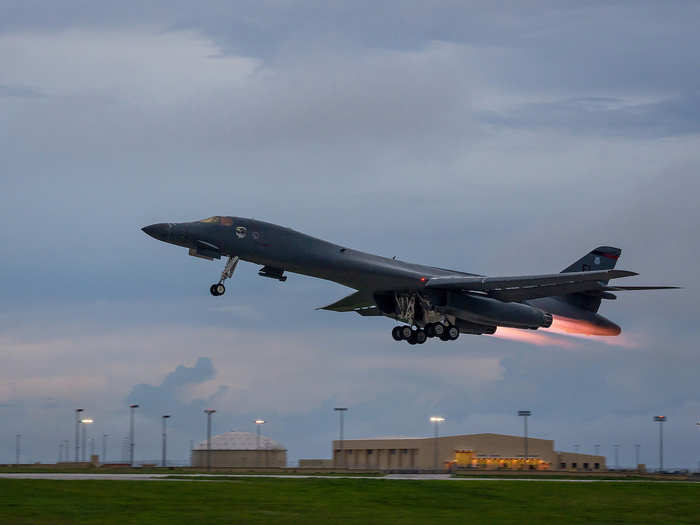
Pentagon spokesman Lt. Col. Chris Logan told Business Insider that he could not say how many bombers might take part in a potential strike.
"We would never want to telegraph what we could do in any given situation," he said.
Source: NBC News
The Lancer has an internal payload of 75,000 pounds — more than any other US bomber. And while the Lancer can't carry nuclear weapons, it is capable of carrying a variety of bombs and missiles.
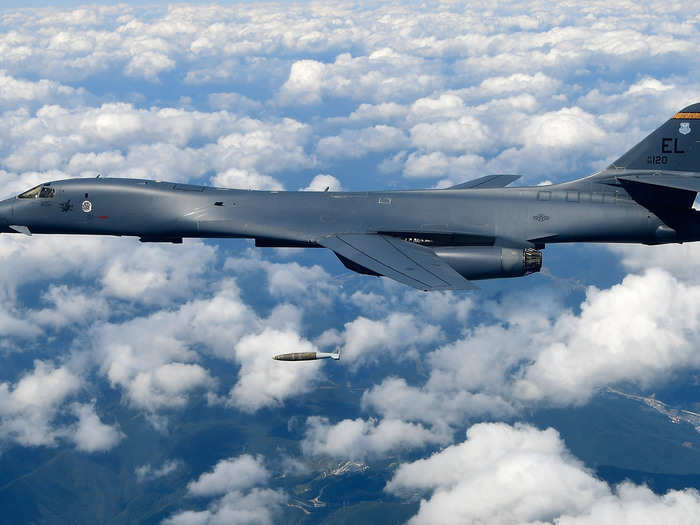
The Lancer can be armed with the following:
84 500-pound Mk-82 or 24 2,000-pound Mk-84 general purpose bombs.
Up to 84 500-pound Mk-62 or eight 2,000-pound Mk-65 Quick Strike naval mines.
30 cluster munitions (CBU-87, -89, -97) or 30 Wind-Corrected Munitions Dispensers (CBU-103, -104, -105).
Up to 24 2,000-pound GBU-31 or 15 500-pound GBU-38 Joint Direct Attack Munitions.
Up to 24 AGM-158A Joint Air-to-Surface Standoff Missiles.
15 GBU-54 Laser Joint Direct Attack Munitions.
Source: NBC News, US Air Force
It has a four-person crew, which includes a commander, copilot, and two combat-systems officers.
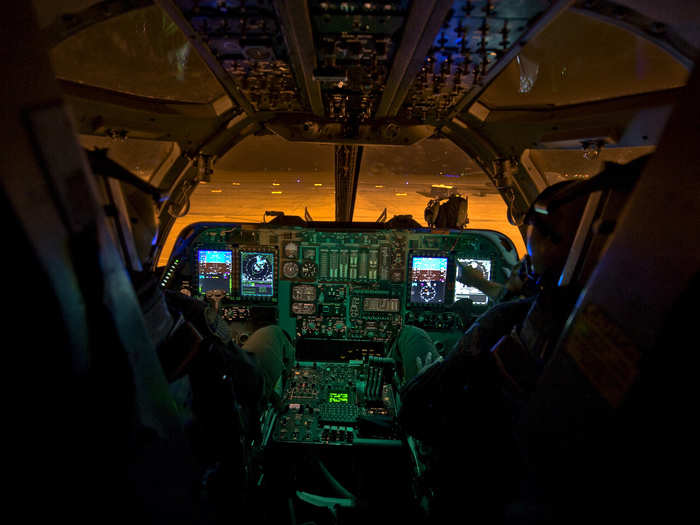
In 2014, the bomber received an upgrade called the Integrated Battle Station, which includes a Vertical Situation Display that consists of four multifunctional color displays. The displays, seen above, give pilots more situational-awareness data in a user-friendly format.
Source: US Air Force
The Lancer can hit speeds of more than 900 mph and climb to heights of more than 30,000 feet.
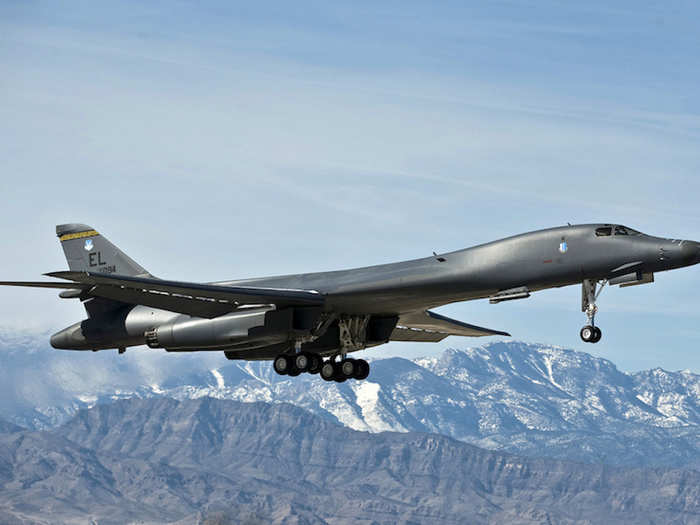
Source: US Air Force
Its four General Electric F101-GE-102 turbofan engines each provide the Lancer with more than 30,000 pounds of thrust.
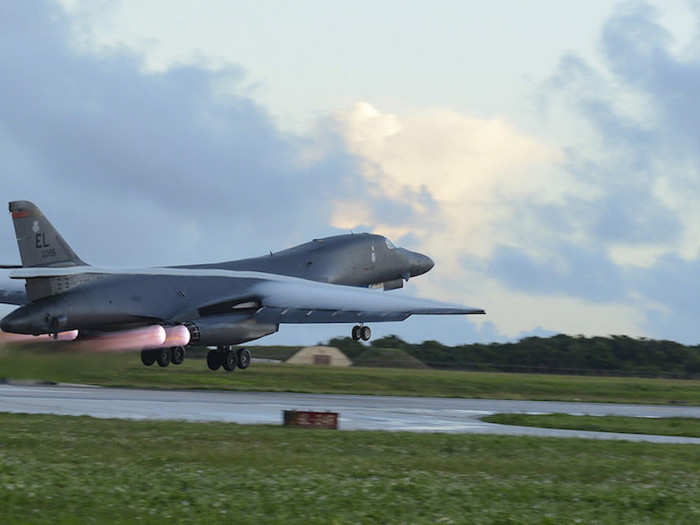
Source: US Air Force
The B-1B Lancer, which was first used in combat in 1998, was heavily used in Operation Iraqi Freedom during the Iraq War, dropping nearly 40% of all the coalition's munitions.
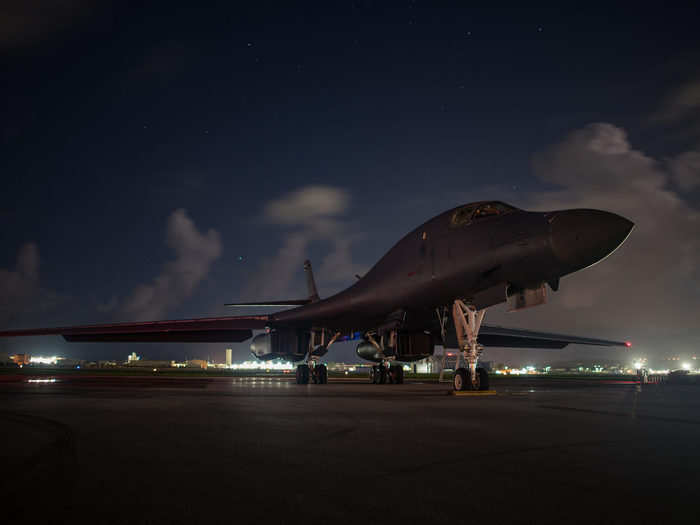
The Lancer, which is made by Boeing — one of the largest defense contractors and political donors in the US — will continue to be the backbone of the US strategic bomber force until about 2040.
The B-1B Lancer is a long-range, multi-role heavy bomber that was developed in the 1970s as a replacement for the B-52.
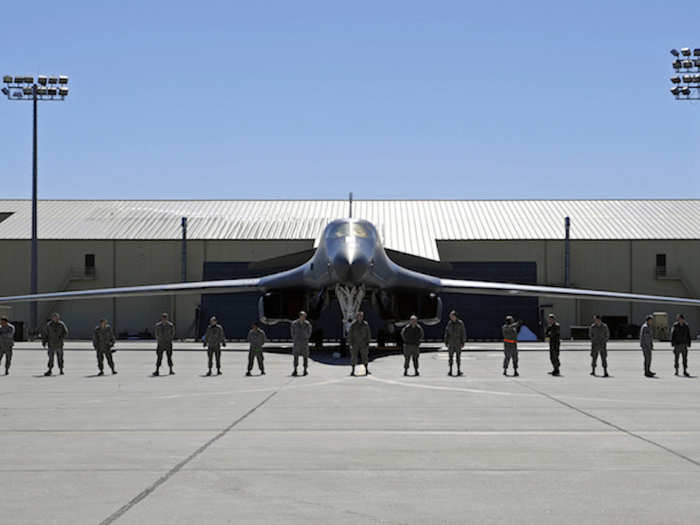
Source: US Air Force
Popular Right Now
Popular Keywords
Advertisement